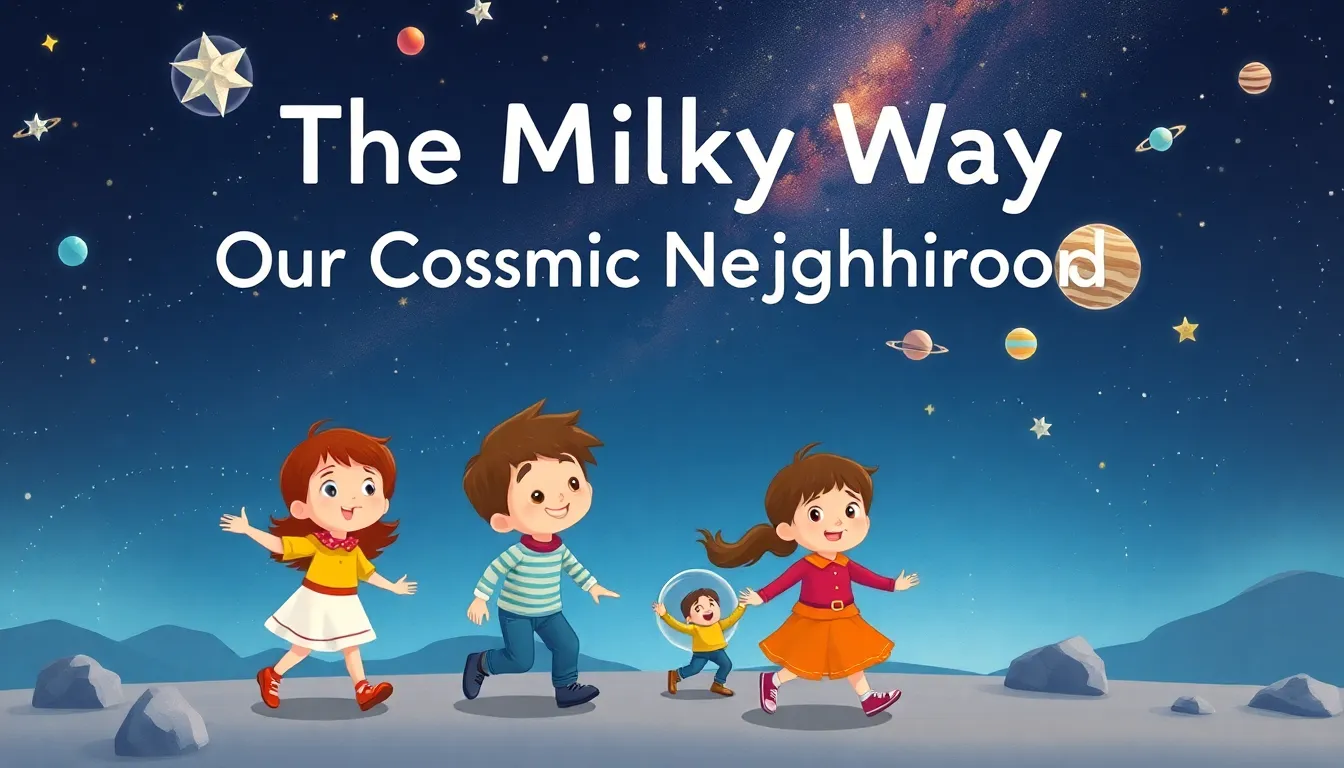
🌌 the Milky Way: Our Cosmic Neighborhood
Introduction
Look up at the night sky and you’ll see a bright, milky band stretching across the darkness. That band is called the Milky Way. It is a huge collection of stars, planets, dust, and gas – and our Earth lives right inside it!
1. What Is the Milky Way?
The Milky Way is a giant Galaxy. Think of a galaxy as a big, spinning pancake made of millions of stars. Our galaxy is so big that it would take 100,000 Years to walk from one side to the other (if you could walk in space!).
2. Stars and Planets Inside
Just like the Sun shines in our sky, the Milky Way has billions of other stars. Some of those stars have their own planets, just like Earth. Imagine a neighborhood where every house has a different garden—some gardens are bright, some are dark, and some have strange colors!
3. Our Sun’s Home
Our Sun is one of the many stars in the Milky Way. It lives in a quiet part called the Orion Arm, which is like a calm street in a huge city. The Sun and all the planets that travel around it (including Earth) are members of this big star family.
4. Seeing the Milky Way
When the sky is very dark and there is no city light, you can see the Milky Way as a milky, glowing road. It looks like a soft, white river of light. If you lie on your back and stare up, you can picture a giant, swirling pancake of stars.
Did You Know? 🤔
The Milky Way is about 1,300 Light‑years thick. That means the light from one side of it would need 1,300 years to travel to the other side!
Conclusion
The Milky Way is our amazing home in space. Next time you look up at the stars, imagine all the hidden worlds swirling around you. Keep asking questions, draw your own galaxy, and maybe one day you’ll explore the Milky Way yourself! 🚀